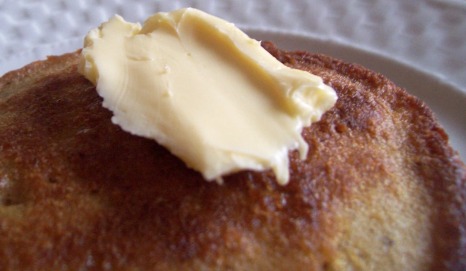How to Bottle Kombucha… and How Not To

I recently got a new kombucha SCOBY and, after a hiatus, got back into brewing. I always start with a quart, move up to a half-gallon and then jump into our two-gallon vessels.
We drink it straight after it has a good tang to it but we also really enjoy bottling it in airtight bottles to create a bit of carbonation. More often than not I just throw a few pieces of fruit into the bottles to flavor it but sometimes we’ll splurge and throw in some juice instead.
Airtight fermentation can be dangerous, and not for health reasons. Anything you make or ferment at home is going to be far less dangerous than what you can purchase from a large food system. The danger in airtight fermentation – usually beverages, but also vegetable ferments in jars – is that carbon dioxide gas builds up as a by-product of fermentation.

This is great in that it provides the carbonation in water kefir, kombucha, and other delicious fermented beverages. The danger is that if you do not use the correct vessel, it can literally explode. We’ve had this happen in the middle of the night with fermented pickles that I’d forgotten to burp. The ensuing baseball bat, find the intruder scenario made for a funny, if heart-pounding, scenario.
That is why I highly recommend checking your vegetable ferments and quickly burping them a couple of times a day in the first week or two when the majority of the carbon dioxide is produced.
Kombucha can be bottled into canning jars, but keep in mind that these jars are not designed for such a task. I was reminded of this the other day when, standing near the counter, Stewart ended up with kombucha all of over his legs. Our floor and cabinets received a similar fate. Thankfully it was a clean break and no one got hurt, but this may not always be the case.

The day I bottled this kombucha the baby was fussing in the sling and I reached swiftly for a quart jar, seeing as it was the nearest available vessel. We generally bottle kombucha in old store-bought kombucha bottles we’ve collected or flip-top bottles designed specifically to withstand the pressure of carbonated beverages. And now I am reminded of why.
So never, ever be afraid of homemade anything but always, always use the appropriate vessel.



Thank you for the sound advice. I am waiting on a friend with a scoby and will hopefully soon be making my own kombucha. Will probably be a while before I even attempt the “bottling” aspects, but even so, learning from someone else’s experience isn’t a bad way to learn. Glad to know that no one was hurt in the “explosion”.
I’ve just started my second batch and am so glad to read what to look out for. Love the little peeks into your life. hugs and blessings – E
Often I will put a box or bowl over my fermenting jars just in case. I have heard too many stories like yours and am worried with kids around. Haven’t had one break yet though, luckily.
Just to be on the safe side I place my bottles filled with kombucha in a towel lined cardboard box and covered the bottles with yet another towel…just in case…you never know. I just figured this way in the event of any breakage the towels would catch most of the mess 🙂